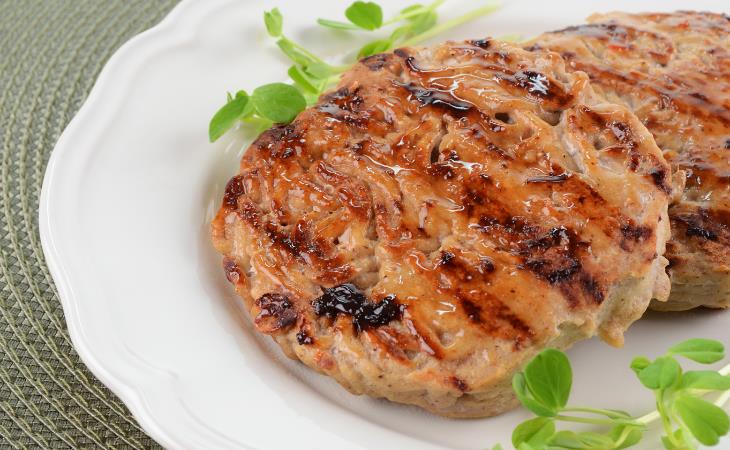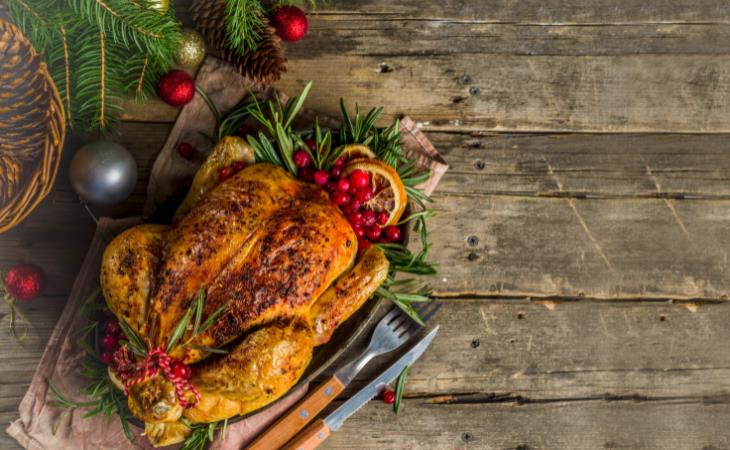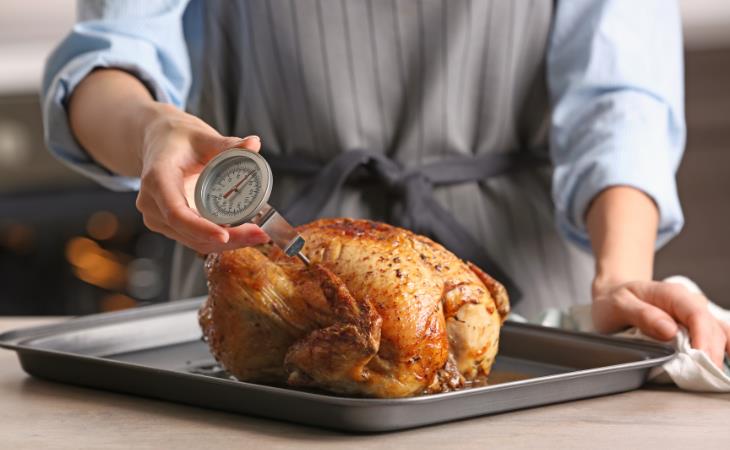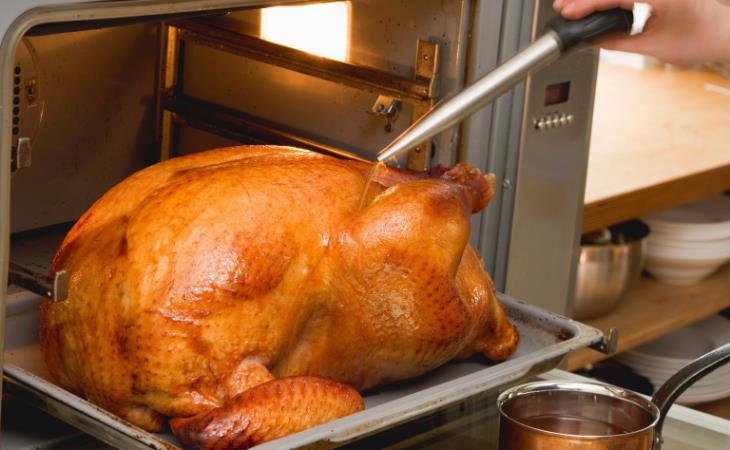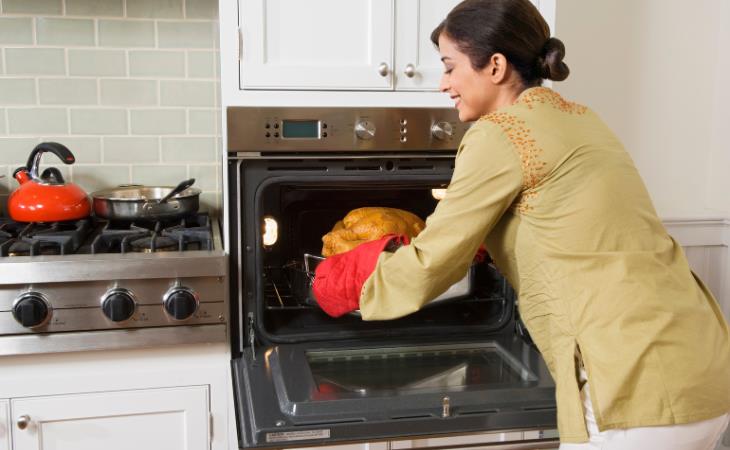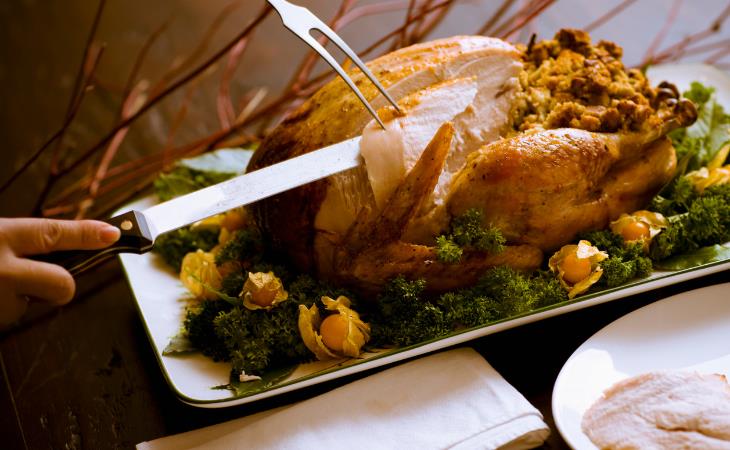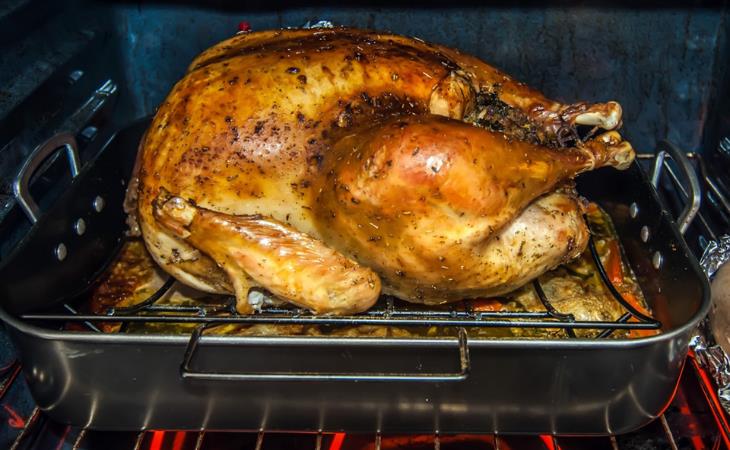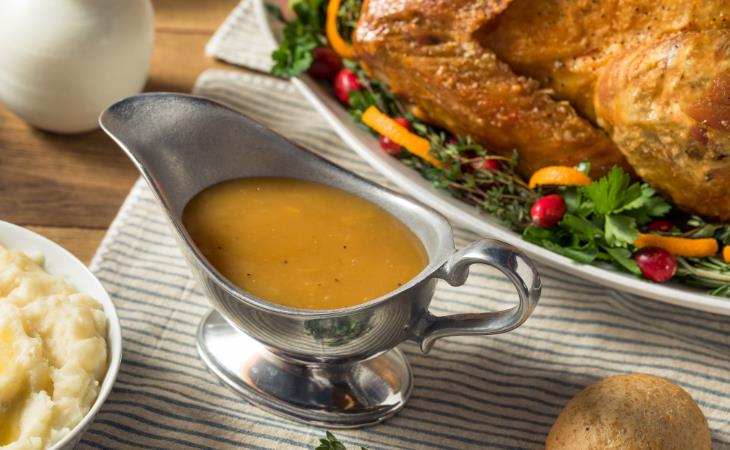Thawing a frozen turkey improperly can cause serious problems. Leaving it on the counter to thaw can lead to uneven defrosting and risks bacterial growth. The safest way to thaw a turkey is in the refrigerator, allowing 24 hours for every 4-5 pounds (roughly 2-2.5 kg). For those who are short on time, you can use a cold water bath, changing the water every 30 minutes. Rushing this step might leave you with a partially frozen bird, which will cook unevenly.
2. Seasoning too lightly
One of the biggest errors is under-seasoning the turkey. A turkey is a large bird, and just sprinkling a little salt and pepper on the skin won’t do the trick. For flavor to penetrate, consider using a dry brine or wet brine, rubbing salt and herbs under the skin, or even injecting marinades directly into the meat. Letting it sit overnight or for at least 12 hours ensures better flavor absorption.
3. Roasting straight out of the fridge
Cooking a cold turkey straight from the refrigerator is a recipe for uneven cooking. The outer layer will overcook while the inside might remain underdone. Take the bird out of the fridge about 30-60 minutes before putting it in the oven to bring it to room temperature. This helps the turkey cook evenly, avoiding dry breast meat and raw thighs.
4. Using the wrong cooking tools
Relying solely on guesswork or those pop-up timers often included with turkeys can result in overcooking or undercooking. Invest in a meat thermometer to check the internal temperature. The USDA recommends cooking turkey at 165°F (74°C) in the thickest part of the breast and 175°F (79°C) in the thighs. Checking frequently near the end of cooking time can save the day.
5. Skipping basting or over-basting
Basting turkey too often or skipping it altogether are both common mistakes. Opening the oven door frequently to baste lets heat escape, extending cooking time. On the flip side, neglecting basting can result in a dry turkey. Strike a balance—baste every 30 minutes or use alternatives like butter rubs or bacon layering to lock in moisture without excessive effort.
6. Not accounting for carryover cooking
Once you take the turkey out of the oven, its internal temperature continues to rise by 5-10°F (2-5°C). Removing it exactly at 165°F (74°C) can lead to overcooking while it rests. Take the turkey out at 160°F (71°C) for the breast and 170°F (77°C) for the thighs, then tent it with foil. This ensures it stays moist and reaches the ideal temperature by the time it’s carved.
7. Carving too soon
Slicing into a turkey immediately after removing it from the oven is a rookie mistake. The juices need time to redistribute within the meat. Letting the turkey rest for at least 20-30 minutes makes a significant difference. Cover it loosely with foil during this time to keep it warm while you prepare the sides.
8. Using too high or too low heat
Cooking at extreme temperatures—either too high or too low—leads to uneven results. High heat risks burning the skin while leaving the meat undercooked, whereas low heat can dry it out. A good approach is to start at 425°F (218°C) for 30 minutes to brown the skin, then reduce the heat to 325°F (163°C) for the remainder of the cooking time.
9. Neglecting the drippings
Turkey drippings are gold for making rich gravy, but they often get overlooked or misused. If the drippings burn or aren’t collected properly, you miss out on a key flavor component. Use a roasting pan with a rack and add some water, broth, or aromatics like onions and celery to the bottom. This prevents burning and creates flavorful drippings for a knockout gravy.
10. Forgetting to plan ahead
Whether it’s underestimating thawing time, miscalculating cooking time, or forgetting essential tools like a meat thermometer, lack of planning leads to last-minute chaos. Create a schedule that includes thawing, seasoning, and cooking times, as well as resting periods. Preparing side dishes in advance can also help you focus on the turkey when it’s go-time.
Bonus Tip: Keep it simple and don’t overthink
Adding too many fancy techniques or ingredients can sometimes backfire. Sticking to a straightforward recipe with fresh ingredients and proper seasoning is often all you need for a turkey that wows your guests.


